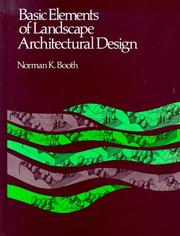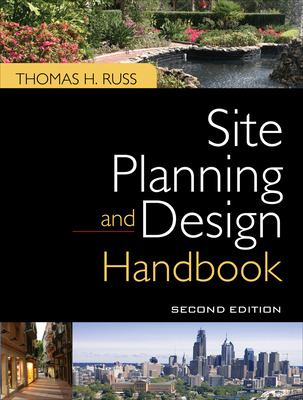LARE’s Section 3: Design is where, in my opinion, things start coming together. The last two sections are hard for a number of reasons. First, this section requires you to use multiple facets of your knowledge at one time to solve a problem. Second, Section 3 is the most changed in format from previous exams and there is less study material available to you. Lastly, test makers have a difficult job in testing creativity in a computer format. After looking at vignettes from previous years, I felt that Section 3 might actually be easier now as long as you don’t get hung up overthinking some of the questions. However, I cannot be sure because I haven’t taken the older format. Comparatively, this new format seems to push test takers to solve one specific problem at a time instead of a whole design at once.
Before moving forward – please take a look at CLARB’s LARE Orientation Guide if you haven’t already.
SECTION 3 ONLINE RESOURCES
This section is relatively the same at the others when it comes to online resources. There is a lot of useful information already explored by others. Take some time to seach about a question you are unsure of. Odds are someone else is looking at the same study guide or practice exam and has already raised the point.
LARE Exam Google Group
One of the best places on the Internet right now to get study materials as well as feedback on questions that you might have about the exam is the unofficial LARE EXAM Google group. Here hundreds of test takers as well as test prep professionals exchange exam tips and study materials.
L.A.R.E. – ANYTHING GOES Land8 Group
If you haven’t already joined Brandon Reed’s Land8 LARE group, what are you waiting for? This is also another fantastic resource for members to swap study materials and ask questions.
Digital Flash Cards
Using flash cards is one of my favorite ways to study, especially if they’ve been pre-made. Many people – including myself – have created personal study material flashcards that are ready to use. Making your own flashcards is a great way to study however, so I still encourage you to create your own set tailored to your own preferences. I would also recommend installing a flashcard app that links to a site like Cram so you have your cards on the go.
CLARB Practice Test
These are a must-have if you want the most accurate representation of topics covered in the new exam.
PPI: Power to Pass Exam Reviews
PPI has long provided test prep materials including practice exams and study guides. The books are written by professors and professionals in the industry and are a good overall resource to study for the new exam formats. They seem to have retrofitted their older Section A-E materials into a new package for Sections 1-4, however which may make the materials a little less accurate than before.
Kevin Worthington’s LARE Study Guides
Cheryl Corson Design Webinars
Land8 member Cheryl Corson is well known for her LARE webinars and her great advice for taking the LARE.
Take a look and see if there is a test prep course in your area. Some colleges offer courses or you may be able to find a practitioner that is getting their side-hustle on.
SECTION 3 READING LIST
Two of these books are straight repeats from Section 2 and one is, in my opinion, unnecessary. Because there is not definitive guide to all aspects of design, CLARB has thrown it’s biggest and widest reaching books into this section’s reading list. Here is where looking at the practice exams and a study guide can really give you an advantage by honing down your studying. If you want to build your own expansive study guide, my advise would be to use the first book on this list to frame it and the rest to supplement those topics. While most of my comments below may lead you to think that you don’t need any textbooks, please make sure you are are taking a real assessment of your own skill and studying accordingly.
Basic Elements of Landscape Architectural Design | Booth
This book is also mentioned for Section 2 and the same sentiment applies. It is a great resource to have whether you are studying for the test or not. The book breaks down landscape architectural concepts into simple graphics and explanations. Originally published in 1989, this book covers the gamut including “landform, plant materials, buildings, pavement, site structures, and water.”

Landscape Architectural Graphic Standards | Hopper
While you should have a solid understanding of the contents of this book already. It never hurts to touch up on your graphical standards. The test is going to make you draw, however, so I would not devote a significant percentage of your time to this book.
You should have already known about this book from Section 2 if you are taking the tests in order. There is a lot of repeated information that you can get from other sources. Given the price of the book, unless there is a way that you can borrow or rent it, I would try and find an assembled study guide rather than shell out so much for some of the same information. I do however feel that a lot of the concepts in this book are more applicable to Section 3 than Section 2.

The Dimensions of Parking | ULI
I am going to level with you here… I didn’t even crack open this book. Parking dimensions can be found in Time Saver standards and I didn’t feel the need to get into the “Financial Feasibility” of “Bidding Methods” of parking facilities. You are going to need to know a decent amount about parking requirements, layout, and safety in order to complete many of the advanced question types. If you are rusty or unsure of your parking knowledge then by all means this book is for you. However, if there is one $80+ book I personally didn’t need, it was this one.
Time Saver Standards for Landscape Architects | Harris and Dines
This book is every landscape architect’s best friend. It will remind you of minimum turning radii, maximum slope on ramps, etc etc. However, it will also bog you down with a huge amount of information if you are not careful. As a former student, you should be familiar with this book. Pay careful attention to the topics provided by CLARB in the Orientation Guide and tailor your reading to it. If you don’t already own a copy then you should. Lest you spend over an hour searching the internet for angled parking standards.
RECOMMENDED STUDY METHODS FOR SECTION 3
As you can probably tell from any of the up to date practice exams, older vignette’s are not going be as big a help as you might have thought. That is not to say you shouldn’t look over them. Instead of spending time trying to figure out the answers to each practice vignette on your own, try analyzing the answers first. Look for the key differences between a FAIL, BARELY PASS, and PASS. These differences are the things you should be paying close attention to. As with other sections, read as much as you can beforehand and then take the practice exams a couple times closer to the test date. This will allow for the greatest impact.
Good luck!
This is part of an ongoing series spotlighting the Landscape Architecture Registration Examination (LARE) administered by the Council of Landscape Architectural Registration Boards (CLARB). If you have any resources that you can add to this guide we would be happy to include you and give you credit. Please contact the author Benjamin Boyd if you have any additional resources that you’d like to share.










